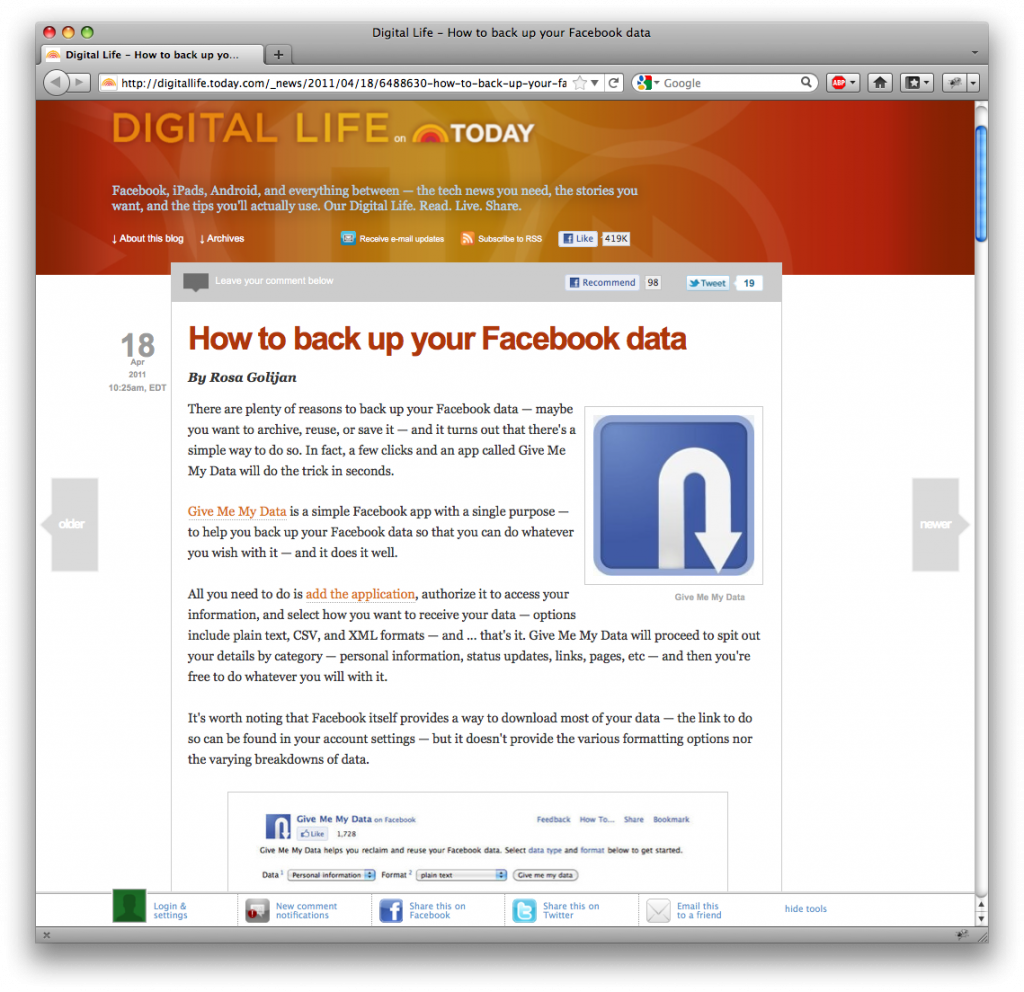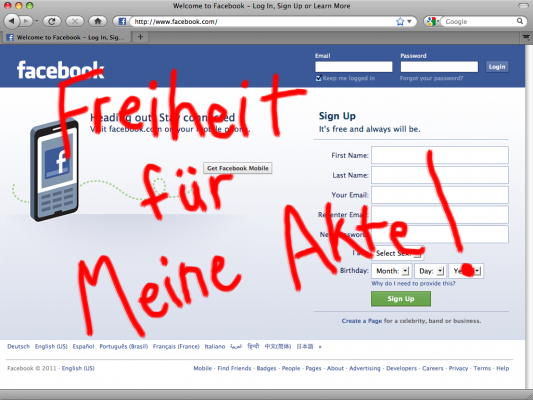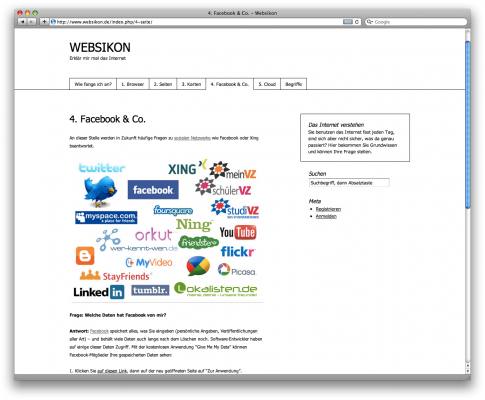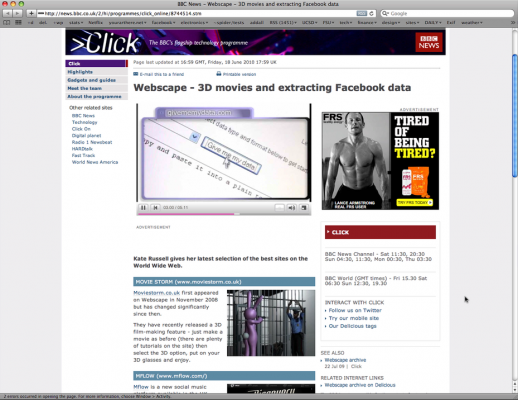This weekend I am presenting a lecture about GIve Me My Data and conducting a two-day data-scraping workshop at Art Meets Radical Openness in Linz, Austria. Here are the details.
The Self-Indulgence of Closed Systems
May 13, 18:45 – 19:15
Part artist lecture, part historical context, Owen Mundy will discuss his Give Me My Data project within the contexts of the history of state surveillance apparatuses, digital media and dialogical art practices, and the ongoing contradiction of privacy and utility in new media.
Freedom for Our Files: Creative Reuse of Personal Data
May 13-14, 14:00 – 16:30
A two-day workshop, with both technical hands-on and idea-driven components. Learn to scrape data and reuse public and private information by writing custom code and using the Facebook API. Additionally, we’ll converse and conceptualize ideas to reclaim our data literally and also imagine what is possible with our data once it is ours! Register here
Art Meets Radical Openness (LiWoLi 2011),
Date: 12th – 14th May 2011
Location: Kunstuniversität Linz, Hauptplatz 8, 4020 Linz, Austria
Observing, comparing, reflecting, imitating, testing, combining
LiWoLi is an open lab and meeting spot for artists, developers and educators using and creating FLOSS (free/libre open source software) and Open Hardware in the artistic and cultural context. LiWoLi is all about sharing skills, code and knowledge within the public domain and discussing the challenges of open practice.














